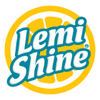Natural DIY Easter Egg Dyeing with Citric Acid
Citric acid is a simple, natural swap for vinegar that delivers bold, beautiful results without the stink. It helps lower the pH of the water, which makes the dye grip the eggshell more effectively. The payoff? Brighter, more consistent colors and fewer streaks. And since citric acid is odor free, it’s a win for indoor egg dyeing parties and sensitive noses alike. It’s easier than you’d think. Here’s what to do:
Basic Dye Mix:
- 1 cup warm water
- 10–20 drops of food coloring (or natural dye)
- 1/4 tsp citric acid (adjust up to 1/2 tsp for deeper hues)
- Optional: 1/2 tsp sugar (helps dye spread evenly for smoother coats)
Steps:
1. Boil and cool eggs: Hard-boil eggs and let them cool completely.
2. Mix the dye cups: In small cups or bowls, combine warm water, citric acid, and food coloring.
3. Dip eggs: Place eggs in the dye for 5–10 minutes, rotating occasionally for even color.
4. Dry gently: Remove with a spoon, let excess dye drip, and dry on a rack or paper towel.
Pro Tips:
- Speckled effect? Use a toothbrush to flick a mixture of food dye + citric acid water over dry eggs.
- Natural dyes? Simmer red cabbage, turmeric, or beets in water with citric acid instead of vinegar for a subtle, earthy palette.
- Two tone designs: Dip half in one color, dry, and then dip the other half in another (citric acid helps prevent muddy blending).
Kid Friendly Bonus Idea: Citric Acid Fizz Eggs
It’s fun, safe, and doubles as a STEM activity for little ones.
What you need:
- 2 tbsp baking soda
- 1/2 tsp citric acid
- A few drops of food coloring
- Water to form a paste
- Hard boiled eggs
- Small spoons or pipettes
How to:
1. Mix baking soda, food coloring, and water to make a paste.
2. Smear paste onto eggs.
3. Sprinkle citric acid over the top.
4. Watch the fizzing reaction as it creates a tie dye pattern on the shell.
From fizz to finish, you've got this egg dyeing thing cracked!
